The problem and possibility of language in Rachel Gray’s Interchange
January 28, 2021, by Adrienne Scott
This essay was written in response to Rachel Gray’s video work, Interchange. Interchange was commissioned as a part of the event PostScript, an online series on accessibility, disability, and digital publishing, presented by Public Access between October 2 - 30th, 2020. Gray presented Interchange as part of an online artist presentation on October 23rd, moderated by Max Ferguson.
Rachel Gray is an artist based in Ottawa, Canada. She holds a BA in English Literature from King’s College and a BFA from the University of Ottawa.
Interchange is available on Gray’s channel on Vimeo:
https://vimeo.com/470694965
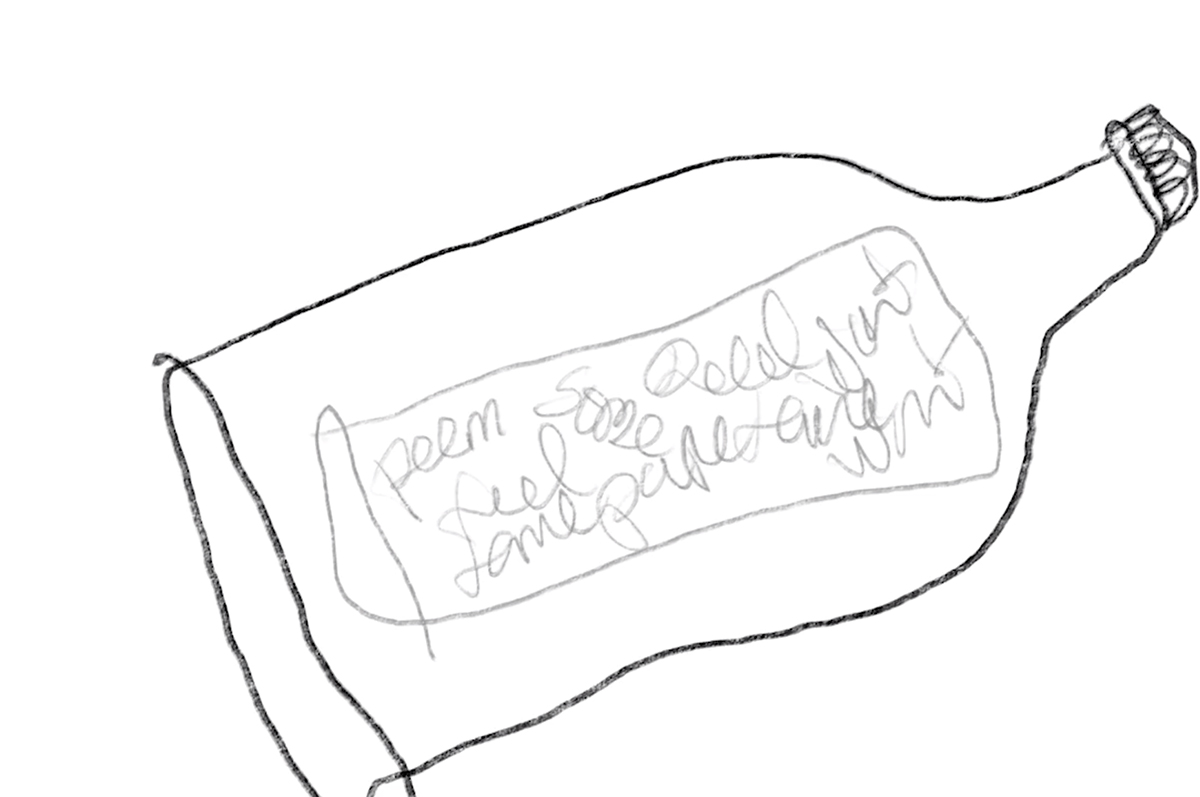
Rachel Gray, Interchange (video still), 2020. Courtesy of the artist
Rachel Gray’s video work, Interchange, is occupied with language, and the problems that are created by privileging the written word. Interchange revolves around Gray’s childhood experience with dyslexia, and the work is a collage of animation, text, and video. In Interchange Gray recalls what it was like to learn to read through narration that acts as the video’s spine, and delivers images that breathe, flex, and break with the expanding universe of language and thought. Within the framework of dyslexia where written language is both an adversary and goal to be reached, Gray’s work shows how written language can be both a vehicle for understanding, as well as an obstacle.
Interchange opens with the image of a message in a bottle, containing “...words travelling across time and space to reach exactly the right hand”. In the castaway stories that Gray describes being told as a child, the writers of these messages are survivors of shipwrecks, forced to send out messages in corked bottles as a plea for rescue. In Interchange, the message in a bottle acts as a metaphor for communication. In this metaphor, the serendipity of finding such a message counterbalances the vulnerability of sending messages out into the world: where there is risk in calling out to the world, there is also the hope of someday being understood.
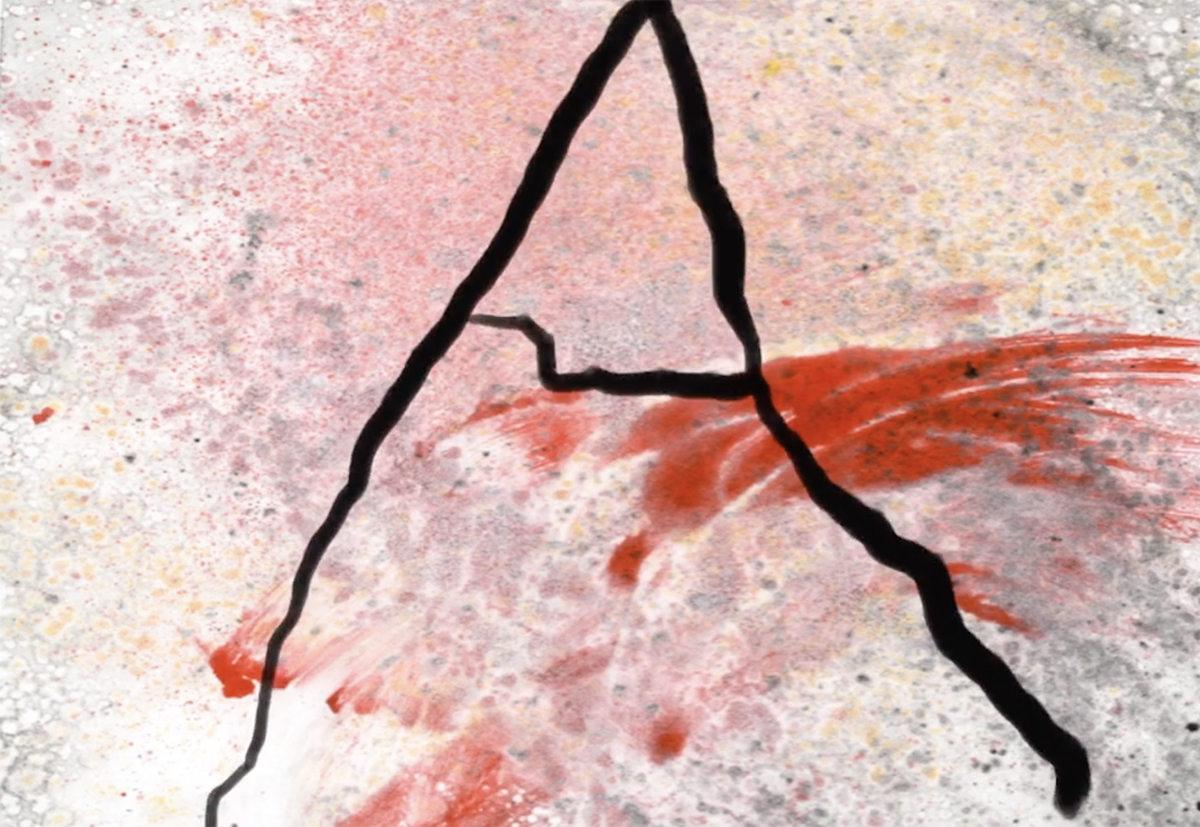
Rachel Gray, Interchange (video still), 2020. Courtesy of the artist
Like the ocean that a message in a bottle is set afloat in, Gray returns to the image of water to describe possible worlds when she narrates:
“in books, the confusing boundary between me and other people vanished. I was not just myself but many selves...with many possibilities. This was a stream that I gorged on to carry me through the time that ran dry.”
There is an urgency to imagination when the physical world has imposed limits, as with disability where the physical universe might be temporarily or permanently compressed to the space between an apartment, doctor’s office, or hospital. Similarly, in childhood, the perimeters of the physical world might extend only from the family home to school. Gray’s early belief of “[reading] as a kind of Nirvana, a paradise where you forever had a hand in its current” connects to the intoxication of this escape. But in the same way that paradise dissolves into a list of desires rather than a concrete place, in Interchange the written word quickly transforms into an impermeable set of sonic and visual puzzles. In Gray’s telling of her early life, “reading would not come,” revealing frustration and disconnection on the flipside of the written word’s idyllic possibility.
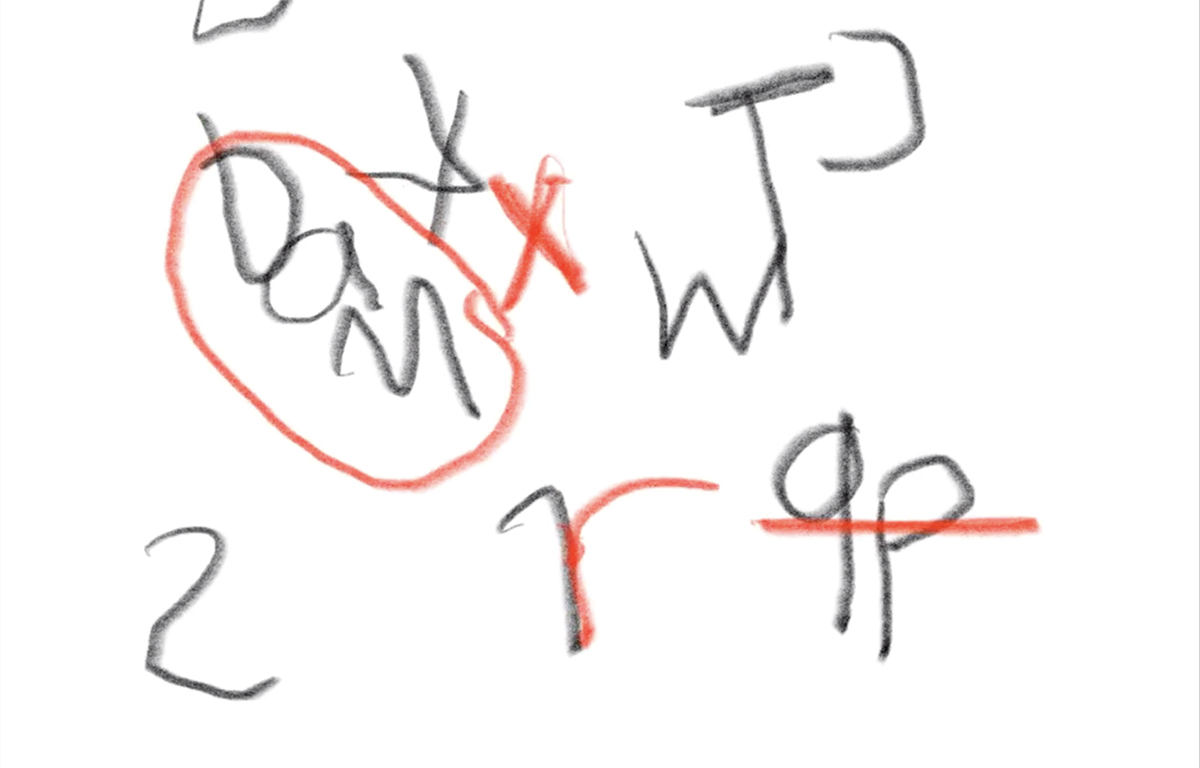
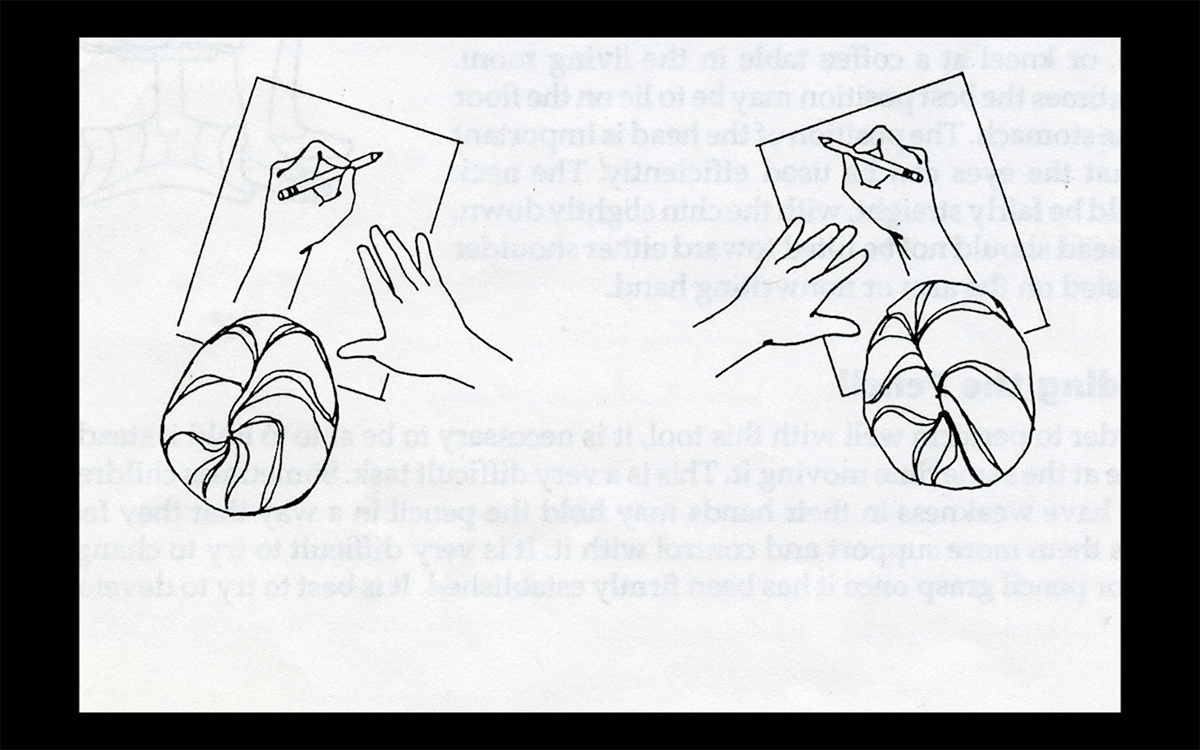
Rachel Gray, Interchange (video stills), 2020. Courtesy of the artist
This feeling of disconnection reappears in quoted diagnostic assessments from Gray’s own personal documents. The secondhand words of teachers and occupational therapists play through the second half of Interchange in Gray’s reading, and in the implied correction of school assignments and written report notes. This overlapping narration can come across as two voices, fighting across two sides of the same story. Gray opens this sequence with the text “I am interested in the question of right and wrong, and good and bad, and apparently have been for some time” and as this observation is made, images of corrected school assignments, and definitions of learning disabilities from school paperwork begin to fill the frame. The language of diagnosis and correction are stitched into a single interfering hum, casting the definitions of ‘good’, ‘bad’ and ‘normal’ as distractions instead of useful measures. While Gray asks “is this a good letter?” , scanned images of ‘correct’ and ‘incorrect’ writing posture flash between animated letters that dance in place and shift position, as if to undermine the ‘correct’ letter in stasis.
The feeling of being called correct or incorrect, or good and bad as a child is powerful, and in this sequence Interchange evokes the disempowerment of being too young to argue for your own mind. Children are asked to trust the determinations of adults on all things, including the recorded judgments adults make of them through comments, report cards, and assessments. This power imbalance is palpable, and easily weaponized if mis-used. While a message in a bottle can be cast into the ocean or into a conversation, it can also sink if rejected by superficial definitions of a ‘right’ word, a ‘wrong’ word, or the underestimation of a mind.
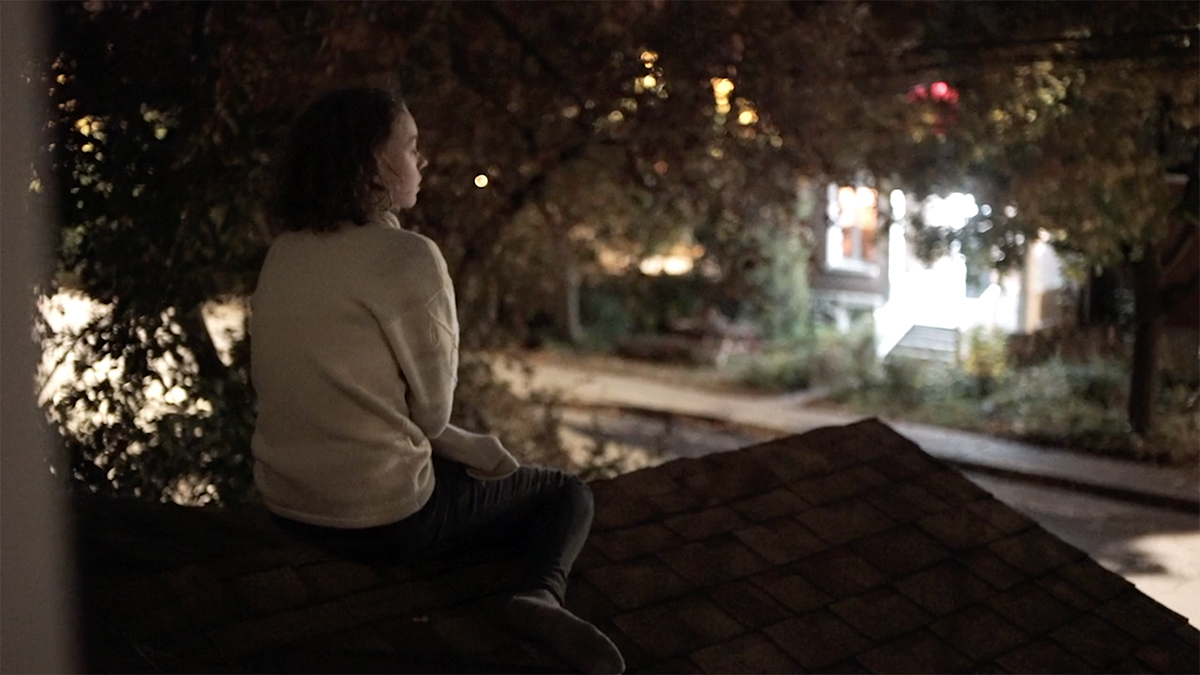
Rachel Gray, Interchange (video still), 2020. Courtesy of the artist
Interchange ends with the image of Gray climbing from the window of her childhood bedroom, as an observer and participant in “a world of frequencies and chemical signatures”. Gray likens these forces to languages, and in this broad definition gestures at a more inclusive way of communicating - where text falters, there are as many modes of expression to answer and fill the gap as can be perceived.
Adrienne Scott (she/her) is an artist and writer in Toronto, Ontario. She is a graduate of the BFA program at the University of Ottawa (2016) and a recipient of the Edmund and Isobel Ryan Scholarship in photography. She has been included in exhibitions throughout Ontario, including at the Gladstone Hotel (Toronto, Ontario), Idea Exchange (Cambridge, Ontario), and Karsh-Masson Gallery (Ottawa, Ontario). She has also been a collaborator on interdisciplinary projects through programs such as the 2017 Montreal Contemporary Music Lab (LMCML). She recently participated in the 2020 Roundtable Residency as a member of Emergensies collective, a 3-person collective founded to explore the connections between music and animation.
www.adriennemscott.com
Instagram: @adrienne.m.scott
